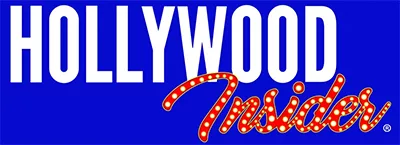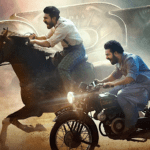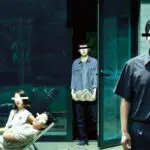Table of Contents
And a DVD is…
To start at the very beginning- a very good place to start, I’ve been made to understand- we actually need to go back even further. Not to DVDs, but to LaserDiscs.
In 1977, VHS was a revelation. At the time, home entertainment usually meant dinner conversation, a good book, or a dinner conversation about a good book. But VHS made in-residence movie magic possible. It triumphed over Betamax (that would be going too far back), cornering the market and establishing itself as the primary format for watching films at home. But only a year later, in 1978, something stranger arrived: LaserDisc.
That same year brought a new pope and the first Home Depot. Amid this chaos came a shiny disc called “MCA DiscoVision.” LaserDisc was all optical: it read movies with a laser, unlike VHS, which relied on magnetic tape. Though the DVD wouldn’t be introduced until 1996, it inherited much from LaserDisc, and the two shared a surprisingly similar infrastructure. Both use a laser to read a disc covered in tiny holes, which is translated by a player into picture and sound. Both offered features VHS never could: you could skip to a specific scene, pause on a frame, and even use slow motion. They were also far superior in quality.
Where DVDs improved on LaserDiscs was mainly in storage and convenience. DVDs can hold more video and audio data on one side. No flipping required. They’re quieter, smaller (more like CDs than LPs), and don’t have the inconsistencies in picture that plagued LaserDisc players. LaserDiscs were noisy. They were fickle. Some players displayed better picture than others. Still, they were revolutionary- especially in Japan, where they briefly dominated- and set the stage for what DVDs would become.
Things to do:
- Subscribe to The Hollywood Insider’s YouTube Channel, by clicking here.
- Limited Time Offer – FREE Subscription to The Hollywood Insider
- Click here to read more on The Hollywood Insider’s vision, values and mission statement here – Media has the responsibility to better our world – The Hollywood Insider fully focuses on substance and meaningful entertainment, against gossip and scandal, by combining entertainment, education, and philanthropy.
When Movies Started Talking Back
Here’s where things get more interesting. In 1984, the Criterion Collection did something no one had done before: they added an audio commentary track to their LaserDisc release of ‘King Kong’ (the 1933 original). Film historian Ronald Haver provided a “lecture tour” of the movie’s visual effects and technical production. It wasn’t promotional. It wasn’t scripted like a junket. It was educational and reverent- a masterclass tucked inside the disc.
That track is now considered not just a neat extra but a pioneering moment in film scholarship. For the first time, a film had an official second voice- one that could interpret, analyze, or critique the main one.
DVDs didn’t invent the commentary, but they perfected it. Where LaserDiscs were expensive and cumbersome, DVDs were small, stackable, affordable. And they had room to spare. With studios finally relaxing the rental window that had restricted home video releases during the VHS era, DVDs quickly became the default format for collectors and cinephiles. And with that came an explosion of bonus features- chief among them, the commentary track.
Martin Scorsese is one the first directors to ever record a commentary, though it’s hard to verify. What’s easier to confirm is how influential commentary became. Suddenly, aspiring filmmakers could hear their heroes explain lighting, pacing, performance, or inspiration. You could learn more from listening to one commentary than from a semester of film school. Or at least, that was the promise.
WATCH THE TRAILER of the Film and the Revolution: ‘Can I Go Home Now?’
The Children Around the World Continue to Ask the question
Directors Gone Wild
Of course, not all commentaries are created equal. Some are dense with historical context and thoughtful deconstruction. Others are freewheeling chaos.
One famous example is Ben Affleck’s commentary on ‘Armageddon.’ While visiting the Criterion Closet in April, Affleck admitted that he’s asked about it almost more than any film he’s ever done. In the track, young Affleck- full of Bostonian buddy-buddy energy- doesn’t just give standard insights into the making of the movie; he roasts the plot, questions the logic, and skewers Michael Bay’s more excessive choices. It’s peanut gallery humor with insider access. Affleck dismantles the film from within, and the result is pure gold.
On the other end of the spectrum are the writer-directors who treat commentary as an extension of authorship. Kevin Smith, Quentin Tarantino, and Scorsese again all come to mind. They don’t just explain what happens- they tell you why, and where it came from. Tarantino’s track on ‘True Romance’ is a prime example: he dives into his life story, his inspirations, his strained relationship with his stepfather. You hear not just the story on screen, but the one behind it.
Then you have the party commentaries. ‘Superbad’ is legendary in this regard. The whole Apatow crew is in the booth, and instead of a thoughtful deep-dive into teen comedy tropes, they mostly just mess with Jonah Hill. He’s stuck next to Judd Apatow’s daughter Maude (then very young), and so he isn’t allowed to curse. Eventually, he snaps. Judd leaves the recording to take Maude home. The rest of the commentary feels like a dorm room with microphones.
That unpredictability was part of the charm in this early period of commentary tracks, where no one recording on them thought it was going to last. Michael Bay for instance was surprised to learn that Criterion still existed. The commentary track, at its best, feels like winning a raffle and getting to hang out with the filmmakers. But even when it fails, it still documents something. A moment. A memory. A personality.
Related article: Want GUARANTEED SUCCESS? Remove these ten words from your vocabulary| Transform your life INSTANTLY
Related article: Streaming Services Are Killing Movie Theaters
Now Playing: Everywhere
Today, we don’t really buy DVDs the way we used to. Blu-rays tried to carry the torch, but streaming took the wind out of its sails. You don’t flip through jewel cases anymore- you scroll through thumbnails. And streaming services, for the most part, don’t offer commentary tracks. Too niche. Too expensive. Not enough return on investment.
But the commentary track isn’t dead. It just moved.
YouTube now hosts hundreds of ripped commentaries from old DVDs, synced up unofficially by fans. Podcast culture, too, has picked up the slack. Shows like ‘Blank Check’ offer deep, longform analysis of individual films, often going scene-by-scene with more nuance than any director had time for in a booth. Directors and writers now go on press tours that double as commentaries- appearing on film podcasts, talking through decisions, offering the same kind of insights, just not under studio control.
The “second voice” still exists. It’s just more fragmented.
And sometimes, it still works its magic. I don’t think I really appreciated- or even necessarily liked- Alfred Hitchcock’s ‘Vertigo’ until I listened to William Friedkin’s commentary. The way he talked about the camera, about obsession, about color and movement- it reframed the whole film. Suddenly, it wasn’t just a classic. It was personal. Friedkin helped me see it with new eyes.
That’s the real power of the commentary track. It isn’t just trivia. It’s translation. It’s someone telling you: Here’s why this matters. Here’s what you missed. Let me show you.
In a world full of disposable content and infinite scroll, that kind of attention feels radical. Maybe even essential.
Related article: EVOLUTION: Every Ryan Gosling Role From 1995 to 2020, All Performances Exceptionally Poignant
Related article: EVOLUTION: Every Henry Cavill Role From 2001 to 2021, All Performances Exceptionally Poignant
Related article: All Best Actor/Actress Speeches From The Beginning Of Oscars 1929-2019 | Hollywood Insider
By Joseph Tralongo
Click here to read The Hollywood Insider’s CEO Pritan Ambroase’s love letter to Cinema, TV and Media. An excerpt from the love letter: The Hollywood Insider’s CEO/editor-in-chief Pritan Ambroase affirms, “We have the space and time for all your stories, no matter who/what/where you are. Media/Cinema/TV have a responsibility to better the world and The Hollywood Insider will continue to do so. Talent, diversity and authenticity matter in Cinema/TV, media and storytelling. In fact, I reckon that we should announce “talent-diversity-authenticity-storytelling-Cinema-Oscars-Academy-Awards” as synonyms of each other. We show respect to talent and stories regardless of their skin color, race, gender, sexuality, religion, nationality, etc., thus allowing authenticity into this system just by something as simple as accepting and showing respect to the human species’ factual diversity. We become greater just by respecting and appreciating talent in all its shapes, sizes, and forms. Award winners, which includes nominees, must be chosen on the greatness of their talent ALONE.
I am sure I am speaking for a multitude of Cinema lovers all over the world when I speak of the following sentiments that this medium of art has blessed me with. Cinema taught me about our world, at times in English and at times through the beautiful one-inch bar of subtitles. I learned from the stories in the global movies that we are all alike across all borders. Remember that one of the best symbols of many great civilizations and their prosperity has been the art they have left behind. This art can be in the form of paintings, sculptures, architecture, writings, inventions, etc. For our modern society, Cinema happens to be one of them. Cinema is more than just a form of entertainment, it is an integral part of society. I love the world uniting, be it for Cinema, TV, media, art, fashion, sport, etc.
More Interesting Stories From The Hollywood Insider
– Want GUARANTEED SUCCESS? Remove these ten words from your vocabulary| Transform your life INSTANTLY
– A Tribute to Martin Scorsese: A Complete Analysis of the Life and Career of the Man Who Lives and Breathes Cinema
– Do you know the hidden messages in ‘Call Me By Your Name’? Find out behind the scenes facts in the full commentary and In-depth analysis of the cinematic masterpiece
– A Tribute To The Academy Awards: All Best Actor/Actress Speeches From The Beginning Of Oscars 1929-2019 | From Rami Malek, Leonardo DiCaprio To Denzel Washington, Halle Berry & Beyond | From Olivia Colman, Meryl Streep To Bette Davis & Beyond.
– In the 32nd Year Of His Career, Keanu Reeves’ Face Continues To Reign After Launching Movies Earning Over $4.3 Billion In Total – “John Wick”, “Toy Story 4”, “Matrix”, And Many More

Joseph Tralongo is a playwright and screenwriter who approaches storytelling with a deep respect for film’s ability to distill human behavior into meaningful moments. His personal work- i.e. his plays, screenplays, and films- leans into semantic tension, moral ambiguity, and the quiet unraveling of social dynamics- not to preach, but to parse. For him, writing is a slow excavation of truth through craft. With a background in theatre and independent film, he brings a structural precision and dramatic instinct to every film he reviews. Hollywood Insider’s mission to champion substance over spectacle aligns with Joseph’s belief that storytelling should investigate, not dictate.








